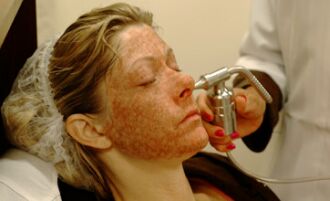Have you ever heard of botulinum toxin? The answer is probably not. However, there is a pretty good chance that you’ve heard of Botox. Believe it or not, they’re actually the same thing. The botulinum toxin is actually the primary, active ingredient in Botox and it has proven to be very effective for a wide array of applications. If you’ve thought about getting Botox injections, you should first take the time to familiarize yourself with the pros, cons and risks involved. Within this guide, you will learn a great deal more about Botox.
What Is Botulinum Toxin (Botox)?
Before going any further, you should take the time to learn more about the Botulinum Toxin or BTX. What is it exactly? BTX is a neurotoxic protein. It is created by the bacterium Clostridium botulin and other similar species. When it is able to enter the body, the botulinum toxin will prevent the body from releasing acetylcholine, which is a neurotransmitter. In return, this leads to flaccid paralysis. According to research, the botulinum toxin just happens to be one of the most poisonous biological substances.
Of course, it can also be used for many reasons as well. While it is considered a poison, it is also referred to as a miracle poison, because it is so beneficial for so many purposes.
What Is Botox Made Of?
Botulinum toxin Type A is utilized to make the very popular Botox. This toxin derives from what is known as Clostridium botulinum bacterium, which is the same organism responsible for food poisoning or botulism. BTX is actually produced from the protein found in the Type A toxin, which is purified. The Clostridium botulinum bacterium produces seven different strains, including the Type A toxin.
What Is Botox Used For?
The U.S. Food and Drug Administration approved Botox for the treatment of a variety of conditions, including cervical dystonia. This condition is characterized by severe spasms in the neck muscles. If untreated, cervical dystonia can be debilitating. However, with routine BTX injections people from this condition can live a normal life, without pain and stiffness.
Botox is also utilized to treat muscle spasms in the upper and lower limbs. Individuals who experience muscle spasms in the elbows, fingers, wrists, ankles or toes can benefit from routine Botox injections. Most people experience relief after the initial injection, which can last up to several months.
The FDA also approved Botox for treating hyperhidrosis, a condition that causes severe underarm sweating. Hyperhidrosis is extremely embarrassing for sufferers, as the increased sweating will seep through the clothing and become visible for everyone to see. BTX is injected into the skin of the armpit to treat excessive sweating.
Botox also helps treat specific eye conditions, involving the muscles and nerves. The ophthalmologist will inject the Botox directly into the eye muscle, which in turn will reduce their movement. It has been proven that BTX works effectively in aligning the eyes, preventing overactive blinking and eyelid spasms.
Botox is also utilized to treat incontinence, urine leakage, and overactive bladder. Urinary incontinence is most often linked to multiple sclerosis and spinal cord injuries. These conditions were previously treated with bladder training and surgery to correct an abnormal positioned bladder. With Botox, patients can avoid surgery and enjoy life without experiencing urinary incontinence.
For individuals who experience frequent migraines, BTX is now available and very effective in treating this condition. However, it is crucial that a medical expert who specializes in migraines and headaches diagnoses it properly. Botox doesn’t help treat common tension headaches. A migraine means a headache that lasts more than 15 days within a 30-day period. The pain will last four hours or longer.
Types Of Botulinum Toxin
Now that you have a background on Botox it is imperative to understand that there are several different types of Botox available on the market. Botulinum type A injections are without a doubt one of the most popular types of cosmetic treatments that are preferred by millions of people throughout the world. Type A Botox helps treat a variety of cosmetic conditions like wrinkles that are the result of long-term smiling, frowning, and squinting. This type of treatment works by blocking the muscles in your face that causes your face to relax. This causes the muscles in your face to soften when you experience a facial expression, which results in fewer wrinkles.
Dysport is another formulation of Botox that is available on the market. Due to this revelation this causes Dysport to have a quicker onset time. BTX usually takes right around 4 to 7 days to take effect, while Dysport can onset in as little as 2 to 5 days. In addition to this, Dysport has properties that allow it to spread to wider areas of the face, which can be a major advantage when treating certain areas of the face. However, one of the major downside to Dysport is that the effects don’t last as long.
Another extremely popular form of Botox is Xeomin. Xeomin was created for the same purposes as the above-mentioned formulas, but it is formulated different, because it doesn’t contain an accompanying protein at all. Unfortunately, Xeomin was only designed to have an impact on muscle movement, which makes it completely ineffective when it comes to treating deep wrinkles that are already formed.
Side Effects Of Botox
Before agreeing to undergo Botox treatments, it is absolutely pertinent to make sure that you’re aware of the potential risks. If you’re not careful, you’ll wind up getting yourself into trouble. Thankfully, the risks are minimal and most people will recover very rapidly. Below, you will learn more about the most common side effects associated with Botox treatments.
- Pain and/or bruising near the injection side
- Drooping of the eyelids
- Dryness of the eyes or mouth
- Intense headaches
- Muscles pains and aches
- Intense sensitivity to light
Some side effects can be far more serious. If you’re suffering from allergic reactions, breathing problems or changes in vision, you should contact your doctor immediately. While the risks are small, there is also a chance that you’ll develop an infection, numbness, or even swallowing problems. If you experience any dangerous symptoms, you need to get in touch with a doctor immediately! The good news is that there are things you can do to minimize these risks.
First and foremost, you should properly prepare yourself for the treatment. Make sure that you’re aware of the treatment procedure and you know how to prepare. Also, it is pertinent to choose the right physician. Do your research and choose someone who understands the uses and modes of BTX administation. These tips will help minimize the risks, while ensuring you’re able to get the results that you desire!
BTX VS Dermal Fillers
Many people mistakenly believe that Botox and Dermal Fillers are identical. This couldn’t be further from the truth. They’re most definitely similar, but they’re also different in numerous ways. In order to determine which one is right for you, it is absolutely vital to learn about the similarities and the differences of BTX and dermal fillers. Below, you will gain more insight into both.
Same Uses
First and foremost, you should know that both Botox and dermal fillers serve the same purposes. They’re primarily used to treat wrinkles in the facial area. At the same time, both treatments are injected in the same manner. Another thing to note is that both treatment options are very effective. Nevertheless, there are many differences that set the two apart.
Longevity
One of the biggest differences between Botox and dermal fillers is the longevity of the results. Truthfully, dermal fillers will provide longer lasting results than the alternatives. Of course, this depends on the specific dermal filler in question. With both options, you should get follow-up maintenance treatments after the treatment wears off.
On average, the effects of BTX can stick around for at least three to four months. Some dermal fillers will remain much longer.
Side Effects
Botox is an ideal treatment for people that are currently in good health. It is a little riskier than the alternatives, but not much. Both can cause an allergic reaction at the injection site. Botox can also cause drooping eyelids, redness around the eyes, irritation and headaches. Dermal fillers cause similar problems. It can lead to an allergic reaction, bruising, itching, sores, and even scarring. Truthfully, both treatment options are fairly safe and the effects will be minimal.
Availability And Cost
The good news is that both are widely available. Most specialists will offer both options to their patients. However, you should know that insurance covers neither of these procedures. Most healthcare providers will offer financing and payment options to their clients. While the prices can be expensive, there is a good chance that you will be able to work out a payment plan that works for you. In terms of Botox, an average session will cost roughly $500, but it depends on numerous factors, including the area treated and your geographical location.
The prices of dermal fillers vary as well. Some specific types are cheaper than others. Hyaluronic acid tends to be the most affordable, while polymethylmethacrylate beads are the most expensive. Be sure to speak with your physician, so you can find out what will work best for you. Those looking for Botox should definitely check out MayLips.
How Long It Takes To Work
Both medications are capable of delivering results fairly quickly. However, they’re somewhat different in this area. Dermal fillers take approximately fifteen minutes to inject. Then, the results can last anywhere from six months to two years. At the same time, the patients will usually see the results almost immediately. When it comes to BTX, the answers depend on the patient. Some clients will begin seeing results within a matter of days. However, others will begin noticing changes in a week. After you’ve left the office, nobody will be able to see that you’ve just had Botox injections. Instead, the fine lines and wrinkles will begin to diminish very slowly.
In general, it will take two whole weeks before you’re able to see the full results. Some patients will need repeat BTX treatments at specific intervals to get the results that they desperately desire. Most patients will be able to maintain the results for at least three or four months.
Uses Are Similar
The uses for dermal fillers and Botox are very similar. However, there are a few minor differences here and there. Dermal fillers help conceal jowls, correct bags under the eyes, smooth lip lines, lift the brows, and restore moisture and fullness to the lips. Botox commonly helps lift the brows, diminish the visibility of crow’s feet, remove frown lines, and add smoothness to the forehead. While they work in different ways, both treatments offer similar results and can be used for similar applications.
Often Used Together
Believe it or not, Botox and dermal fillers are commonly used together. They’re actually complementary to one another. Both share the same goal of attempting to diminish the signs of aging. Many medical professionals will recommend using a combination of Botox and dermal fillers to get quality results. By using both, it will be possible to balance out the lower and upper face. Using a little dermal filler can help achieve a more balanced and natural look. With this in mind, it is truly very important to speak with your doctor before moving forward.
There is a chance that Botox will be best for you or your doctor may recommend dermal fillers. Alternatively, your doctor may believe that you’d be better off using a combination of both. Each patient is unique, so it is pertinent to find the solution that works best for you. The best way to do that is by speaking with your doctor.




